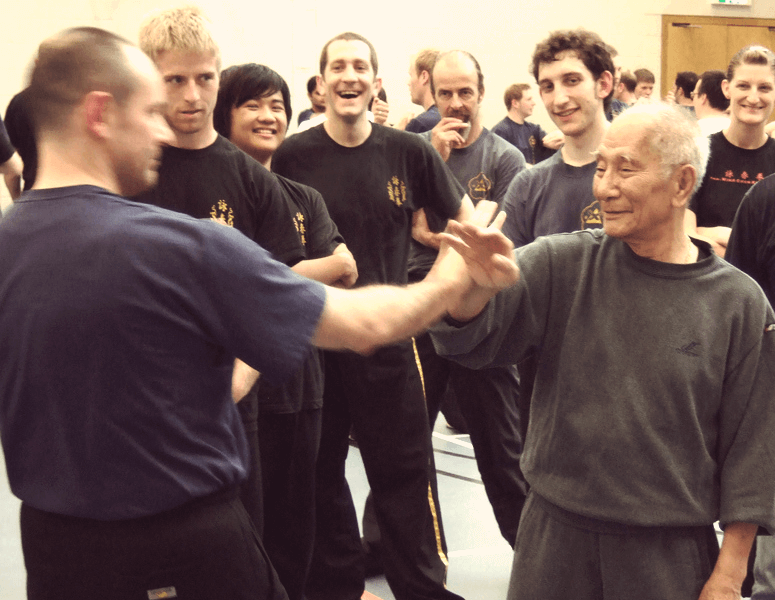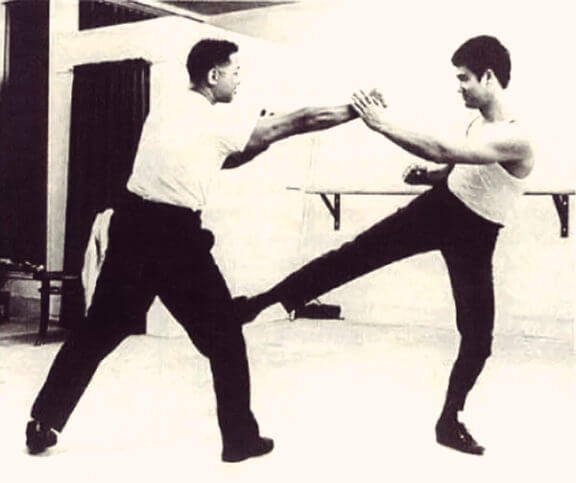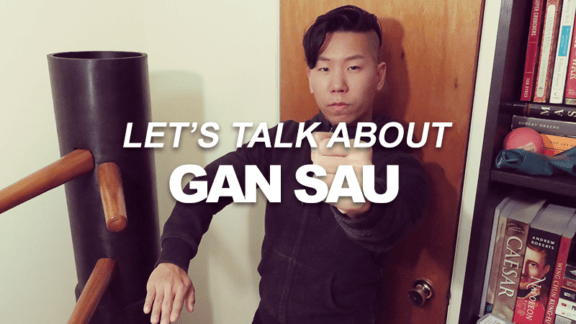Wing Chun Centerline Theory – Understanding the Centerline
The Wing Chun centerline theory is what truly defines Wing Chun. The centerline focuses on a person’s center where all our vital points are located. In Wing Chun, the objective is to control a person’s centerline; if you can control a person’s centerline, you control them . It took me a long time to realize that all Wing Chun drills are to practice protecting our own centerline while attempting to control the opponent’s as well.

In one of the most important Wing Chun training, Chi Sao, you’ll always want to have your centerline match with your sparring partner’s centerline. If your opponent shifts and change the direction their centerline is facing, it is important to mirror their movement by shifting so you can face their centerline again. If your opponent stops matching your centerline then they have open themselves up to you for an attack but this is a double-edged sword because if your centerline stops facing your opponent’s, then they also have an advantage of possibly striking you, so the best solution is to always face off your centerline’s with theirs.
Something that I learned in class and I am still trying to perfect is to protecting my centerline without stiffening up and overreacting when defending against a strike towards my centerline. I learned that a slight bong sau or a light pak sau is enough to divert a punch or strike but when I overreact, I use too much energy or too much force to defend myself. Why is overreacting like that bad? Well, the additional energy or overcompensation can leave me open to be attacked elsewhere because my body will overturn too much iff I pak sau too hard or I might shift with my bong sau towards one direction leaving one side more vulnerable. This also makes it more difficult for me to react with attacks because all my focus is on diverting a strike from hitting me. While learning Wing Chun, one of the first lessons was that we should always be defending and striking, always together and never just one.
The centerline theory can also be applied when practicing on the Wing Chun dummy. For a long time, I practiced on the Wing Chun dummy with just the thought of striking the dummy without really emphasizing on the centerline. It was until my friend Tony, who’s my senior in Wing Chun, mentioned that I should see the Wing Chun dummy with its own centerline and try to strike at it, aiming at its centerline. It’s a good drill and a good habit to focus on the centerline during Wing Chun dummy training or when I’m trying with a real person.
Changing your Centerline with the Triangle Step
In Chi Sao, I’ve been told that not facing an opponent’s center is usually a bad thing and that we should always square up to match the center line. I have found that we can also take advantage of that and side step to change the angle and work our way in to attack the centerline directly.
I talked about this in another post about how shifting can help close the distance. The side step follows a very similar concept. When I Chi Sao, I have discovered that by taking a step to the side can help close the distance. I refer to it as a side step but it’s actually more of a triangle step where I would step towards one direction with one foot and then forward with the opposite foot. The side step doesn’t have to be a huge step, just small enough to change the angle slightly. Taking a bigger step is fine but I feel like it telegraphs my movement much easily and let’s my opponent react fast enough to defend themselves by squaring up again. From my experience, the smaller the step, the easier it is to quickly step forward and create a combo.
During Chi Sao when my opponent’s energy or center is pointed at me, it’s very difficult to get in to attack their center without resistance because they have their guard up and are facing me. But if I change the angle where their center is slightly off and their hands are away from me, they create an opening and I take it and go in. It’s all in the angles. It’s one small thing but it makes a huge difference.


